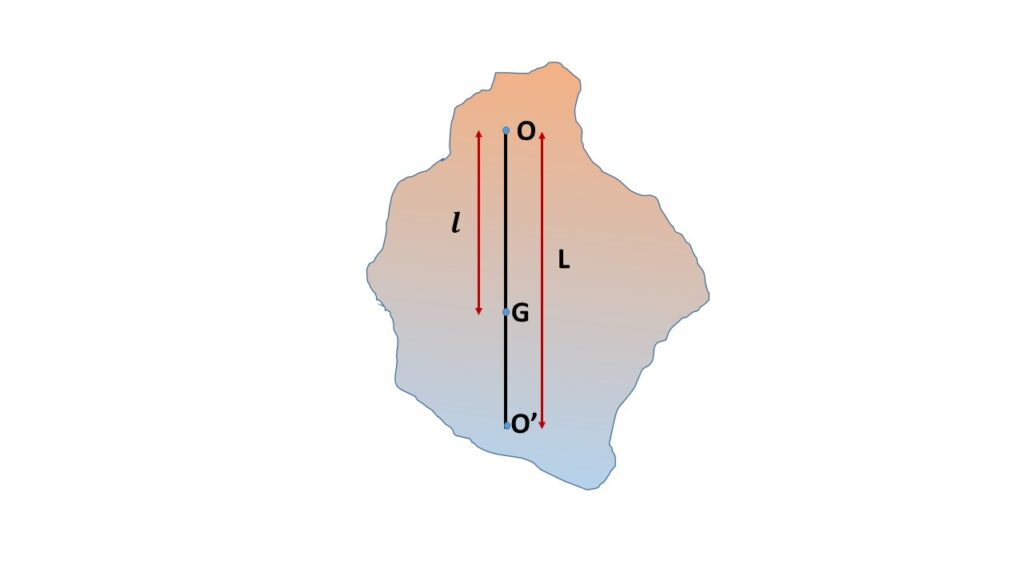Equivalent simple pendulum:
We know that the time period of oscillation of a compound pendulum is
\( \displaystyle{T=2\pi\sqrt{\frac{K^2+l^2}{gl}}}\tag{1} \)
[ To know the derivation of this equation (CLICK HERE) ]
where, \( g \) is the acceleration due to gravity, \( l \) is the distance between the centre of gravity \( G \) and point \( O \), \( K \) is the radius of gyration.

If \( L \) be the length of the simple pendulum then the time period of oscillation of the simple pendulum is given by
\( \displaystyle{T=2\pi\sqrt{\frac{L}{g}}}\tag{2} \)
From equations (1) & (2) we get
\( \displaystyle{L=\frac{K^2+l^2}{l}} \)
or, \( \displaystyle{L=\frac{MK^2+Ml^2}{Ml}} \)
[where M is the total mass of the pendulum ]
or, \( \displaystyle{L=\frac{I}{Ml}} \)
Where, \( I \) is the moment of inertia of the compound pendulum about an axis through the point O.
So \( L \) which is represented by OO’, is the length of the simple pendulum, equivalent to the compound pendulum.
O is called centre of suspension and O’ is called the centre of oscillation.